S and X-band rhoHV observations in hail: 3 August 2013
Author: P. C. Kennedy
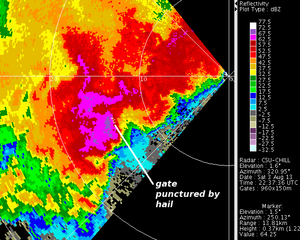
An intense reflectivity core produced hailstones that punctured a plastic yard fence gate at the indicated location in southwestern Greeley on 3 August 2013. Plots of the CSU-CHILL S and X-band fields observed around the time of this hail damage have been prepared.
Introduction
During the late afternoon hours of Saturday, 3 August 2013, severe thunderstorm activity affected several locations in northeastern Colorado. The CSU-CHILL radar was primarily collecting low elevation angle PPI sector scans to support a rain mapping project. These scans captured a damaging hailstorm that moved across the southern portions Greeley. The following two photographs show holes that the hailstone impacts caused in the yard gate of a house located in southwestern Greeley. A few of the stones passed completely though both of the plastic faces of the gate. The hole sizes indicate that the hailstones were approximately 2 to 3 cm in diameter (roughly 1 inch). Depending upon their surface water coating thickness, hailstones larger than ~ 1 to 1.5 cm in diameter will begin to cause detectable Mie scattering effects at X-band (Jameson and Srivastava, JAM 1978, p1694-1703).
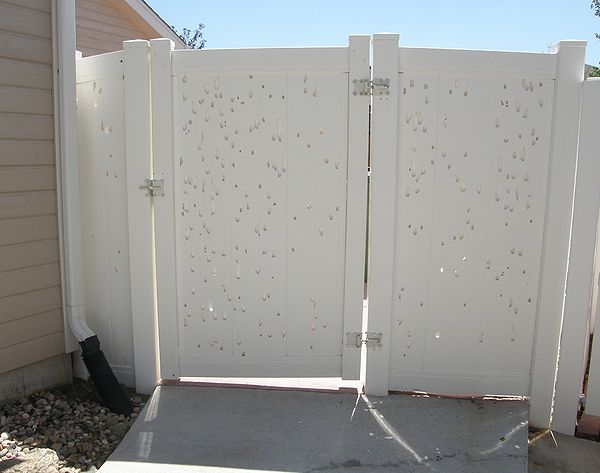
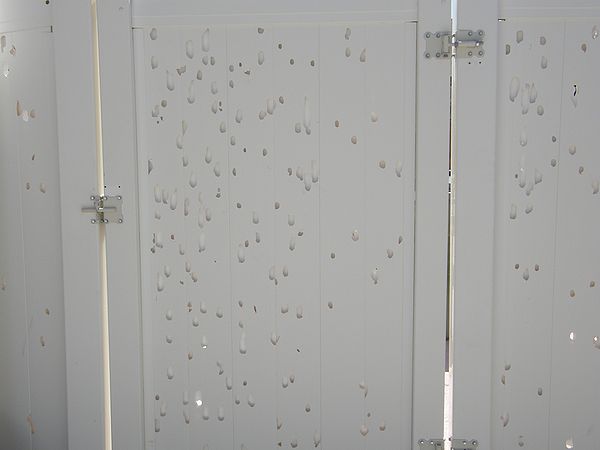
S-band hail indications
The following plot shows the S-band (3 GHz) CSU-CHILL reflectivity field at 1.5 deg elevation angle as the storm's >65 dBZ reflectivity core was just starting to reach the location of the gate. To facilitate comparisons of the fields, both the S and X-band data have been interpolated by the NCAR SPRINT program to a common set of 0.25 km mesh Cartesian grid points on the original PPI scan surfaces.
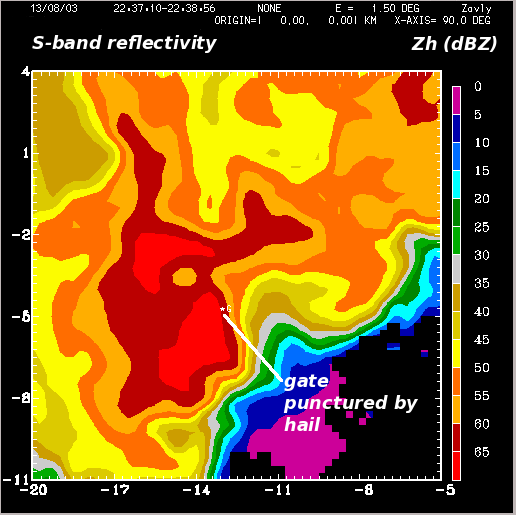
The corresponding S-band differential reflectivity () field is shown in the next plot. For reference, an overlay of the 55 and 65 dBZ reflectivity contour lines has been added. Relative to the surrounding lower reflectivity areas, the values in the echo cores are reduced in magnitude. Since remained positive, the precipitation in the echo cores probably consisted of a mixture of oblate hydrometeors (large rain drops and melting ice particles with a thick water coating) and larger diameter, quasi-spherical / tumbling hailstones. Due to the generally west to east echo motions, the high reflectivity / low indications of hail in the echo core probably began to reach the location of the damaged gate within ~2 minutes of this PPI scan time.
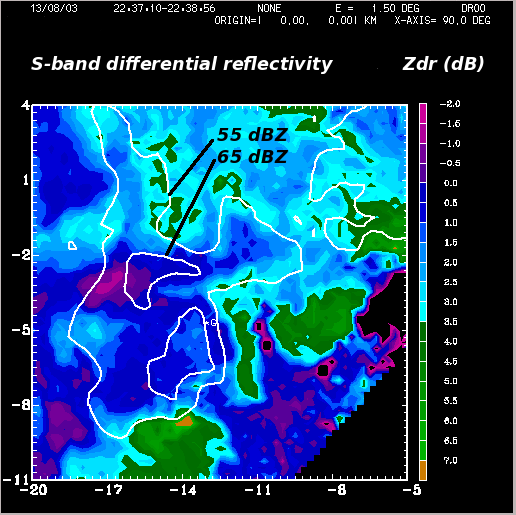
data at S and X-bands
The following two plots show the co-polar H,V correlation () fields observed at S and X-bands. To eliminate noise contamination, a +5 dB SNR threshold was applied to the X-band data. To focus attention on the probable hail-containing areas, both plots have also been thresholded at the 55 dBZ S-band reflectivity level. The S-band data shows a general correlation reduction to levels of ~ 0.9 in the immediate vicinity of the damaged gate. Even lower S-Band correlations (~ 0.83) were found in the reflectivity gradient region along the southeastern edge of the plotted echo.
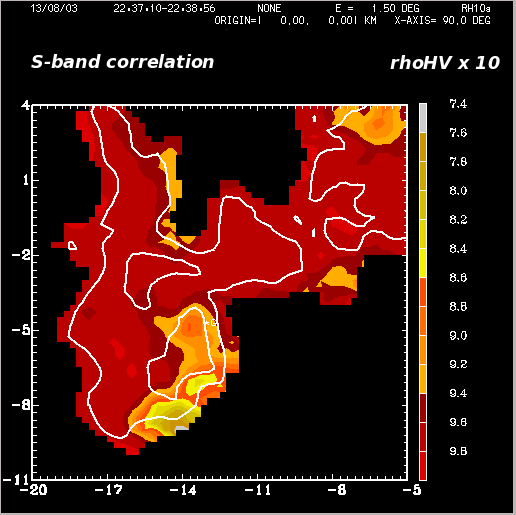
The next plot shows the corresponding X-band data. The X-band levels are considerably lower than the S-band values (~0.73 vs. ~0.85 - 0.90) in the echo core region to the southeast of the gate damage location. The SNR in this region exceeds +30 dB, so lowering due to noise is insignificant. This increased reduction may have resulted from the Mie scattering effects at X-band due to the ~ 2cm diameter hailstones. (The Mie scattering effects at S-band would be less due to the longer wavelength.) In some portions of the southeastern, high gradient edge of the plotted echo, the X-band correlations are higher than the S-band values. This may be the result of the larger S-band pulse volume size: 150m in range and 1.0 deg in azimuth vs. the X-band's 75m in range and 0.3 deg in azimuth.
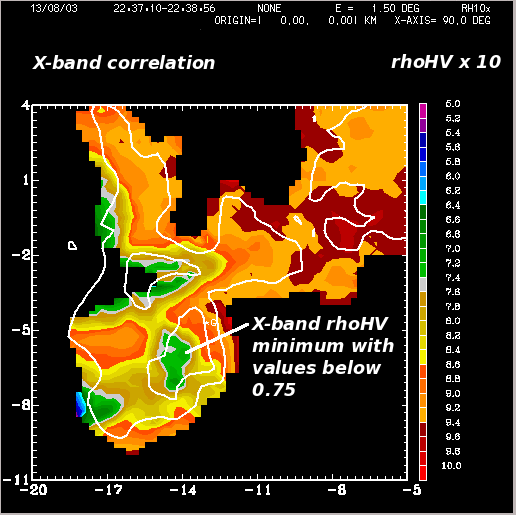
Summary
The hailstone diameters documented at one location in the 3 August 2013 Greeley hailstorm are consistent with the expectation of preferentially larger Mie scattering effects at X-band vs. S-band. Considerably more work is needed to confirm these preliminary results.
References
- Jameson, A. R., R. C. Srivastava, 1978: Dual-Wavelength Doppler Radar Observations of Hail at Vertical Incidence. J. Appl. Meteor., 17, 1694–1703.

